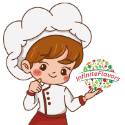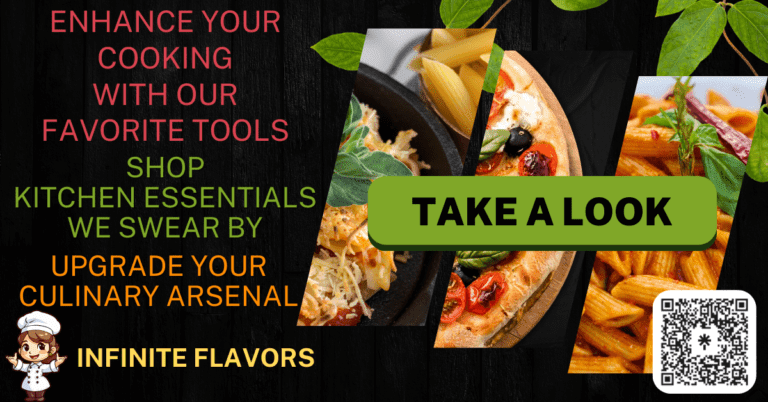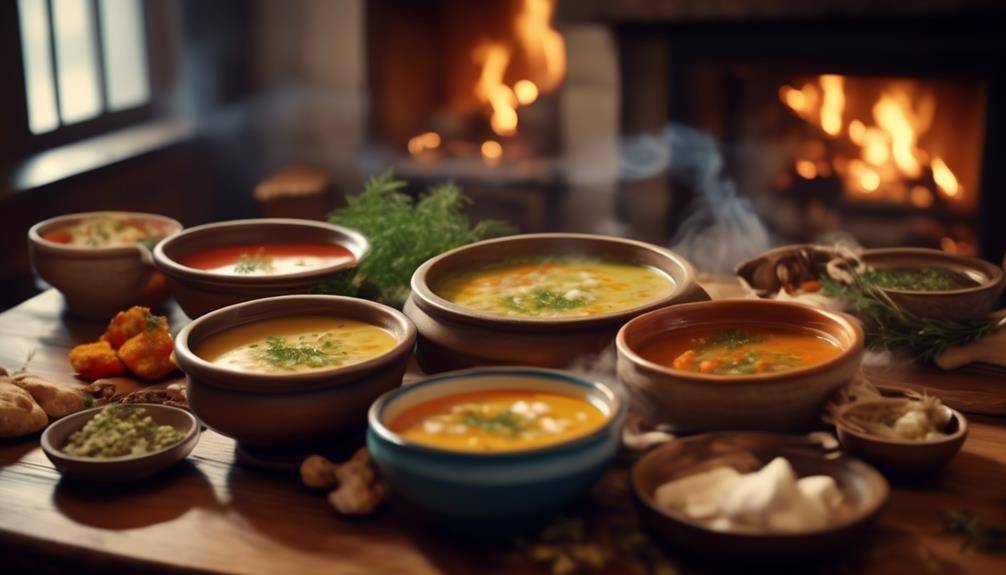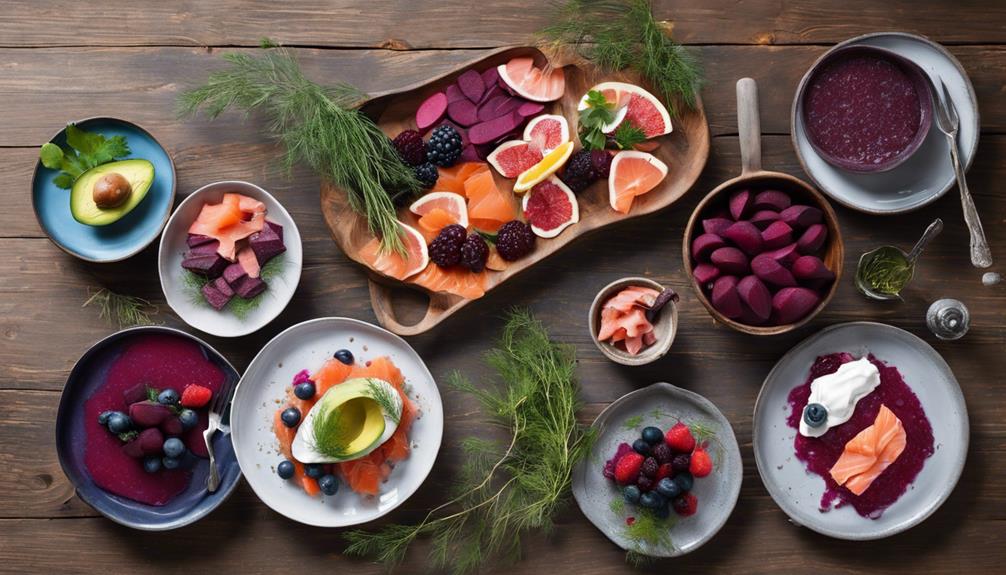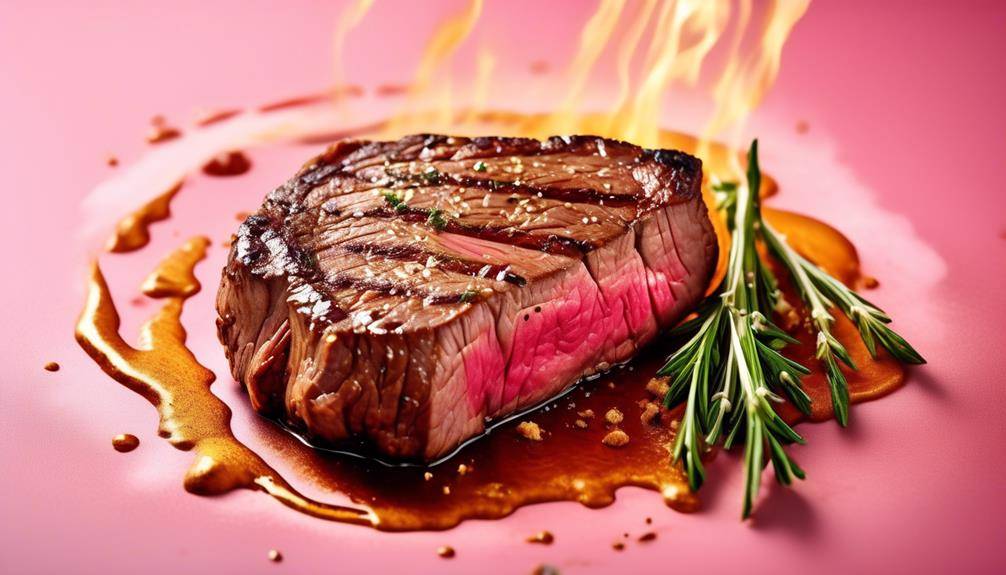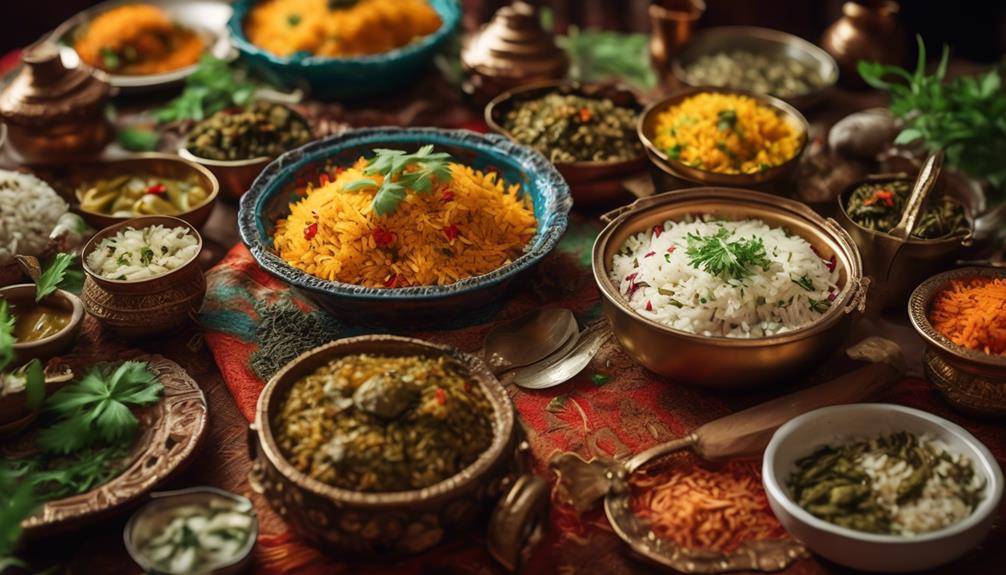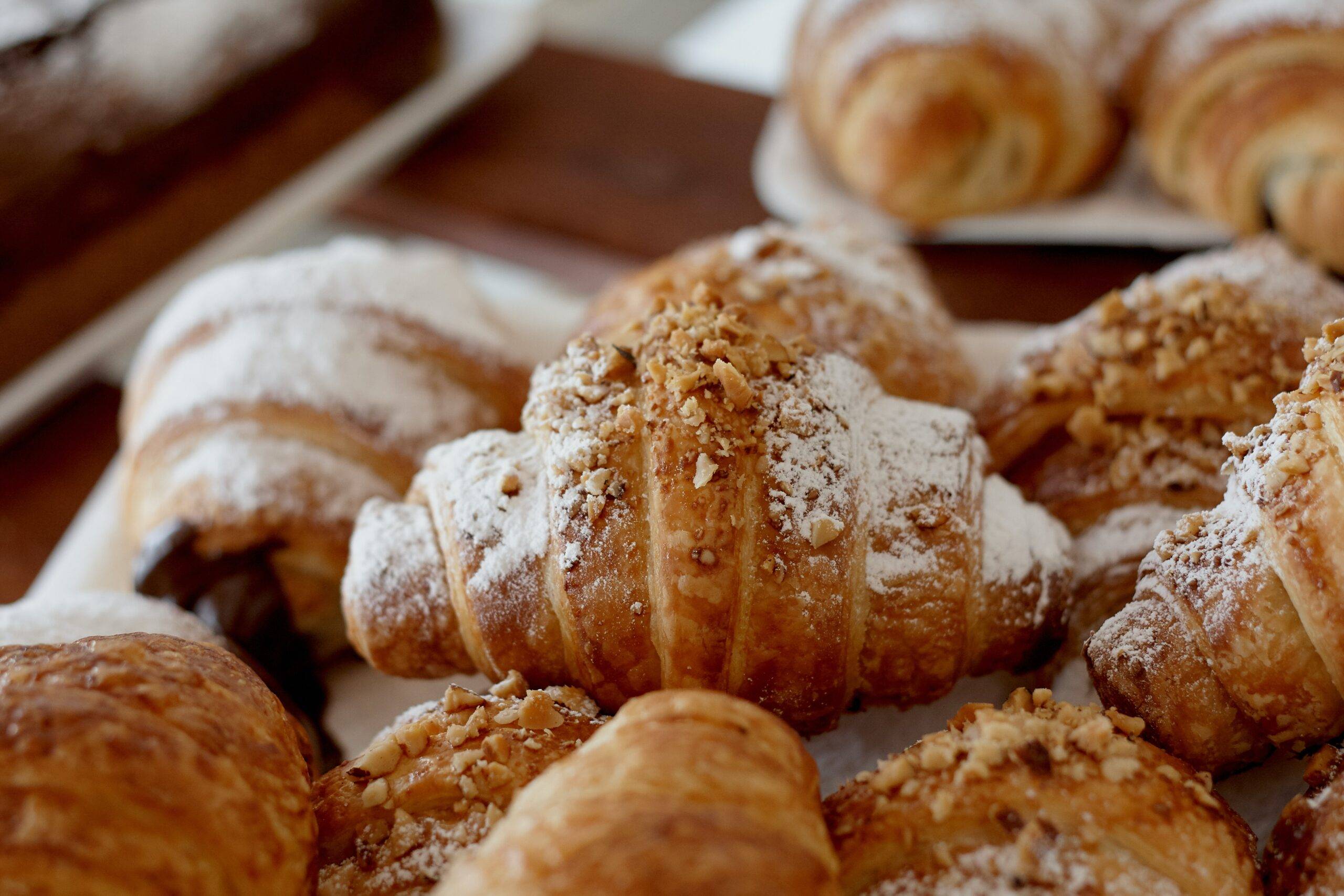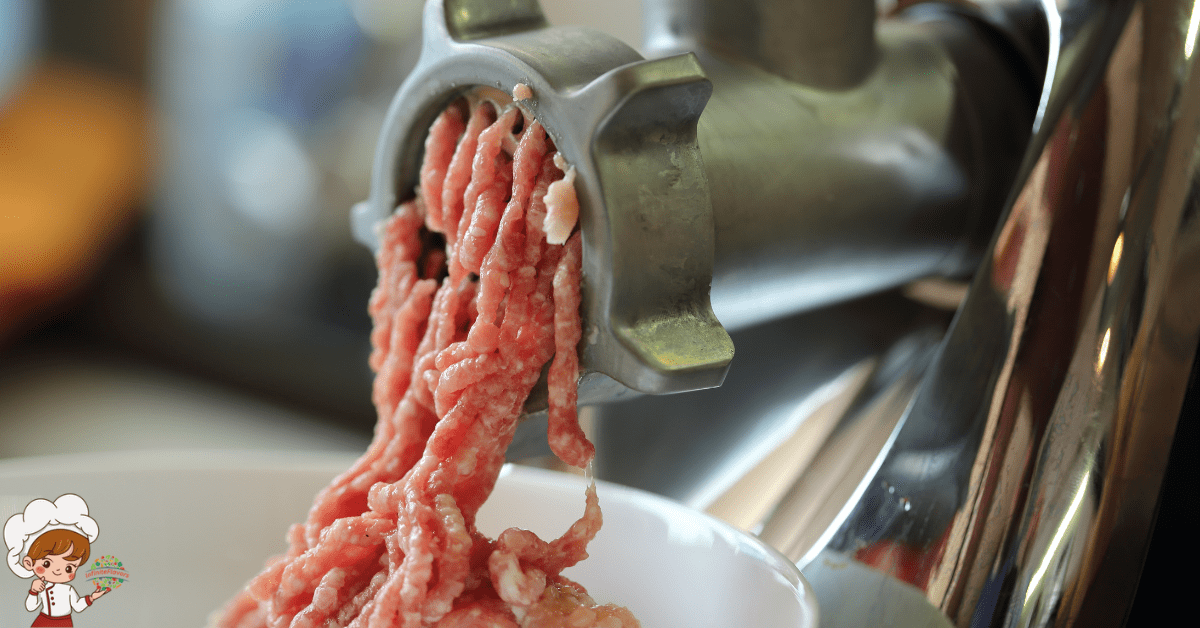How To Flambe For Caramelization In Cooking
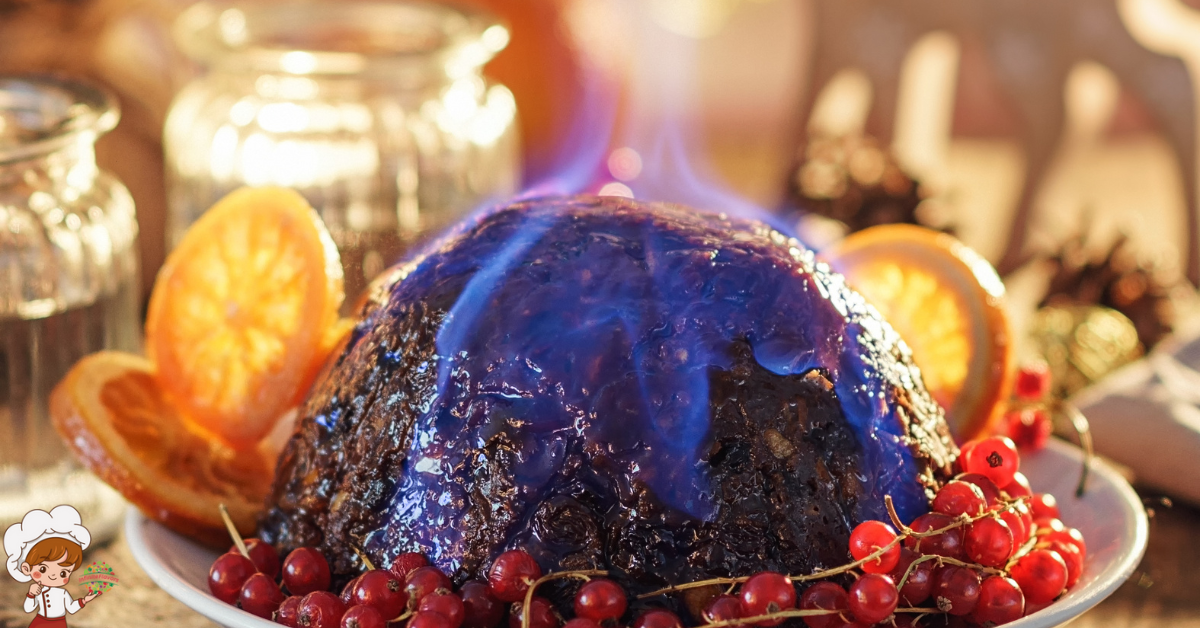
How To Flambe For Caramelization In Cooking; Flambéing is a fantastic cooking technique that can enhance both flavor and caramelization in your dishes. When you flambé, you use high-proof alcohol, like brandy or rum, to ignite and create a flame, which not only adds aroma but also intensifies the caramelization of sugars. The heat from the flames promotes the Maillard reaction, giving your food a rich color and depth of flavor. Just remember to prioritize safety by keeping a lid handy to smother flames and using appropriate cooking equipment. If you’re curious about perfecting this technique, there’s plenty more to explore!
Understanding Flambéing
Flambéing is a cooking technique that adds both flavor and drama to your dishes. By igniting alcohol in your pan, you create a stunning visual and infuse your food with rich, complex tastes. The flambé technique is not just for show; it enhances the dish’s aroma and can intensify flavors, making it a favorite among chefs and home cooks alike.
Understanding the flambé history can deepen your appreciation for this method. It dates back to the 19th century, particularly in French cuisine, where it was used to impress diners and elevate meals. Legends suggest that the technique was developed in the kitchens of prestigious restaurants, where chefs sought to create unforgettable dining experiences. Over time, flambéing has made its way into various culinary traditions, evolving in both style and execution.
When you want to try flambéing, make certain you choose the right alcohol; spirits like brandy or rum work best due to their higher alcohol content. You’ll want to warm the alcohol slightly before adding it to the pan, then carefully ignite it with a long lighter. Remember, safety is key—always have a lid nearby to smother any flames if needed.
The Science of Caramelization
When you cook, understanding the Maillard reaction is key to achieving that perfect flavor and color in your dishes. Temperature plays a vital role in caramelization, influencing how sugars break down and develop rich, complex tastes. Let’s explore how these scientific principles come together to elevate your cooking.
Maillard Reaction Explained
The Maillard reaction is a fascinating chemical process that occurs when proteins and sugars in food are exposed to heat. This complex interaction kicks off the browning process that gives cooked food its appealing color and rich flavors. As you apply heat during cooking, the sugars undergo transformation, interacting with proteins to create new compounds. This is where the magic of flavor development happens.
You might notice that when you sear meat or toast bread, the aroma enhancement is remarkable. That delicious smell wafting through the kitchen is a direct result of the Maillard reaction at work. It’s not just about looks; this cooking chemistry contributes considerably to the overall taste profile of your dishes.
The key to revealing these flavors lies in understanding the precise conditions for the Maillard reaction to take place. It’s crucial to monitor your heat application, as too much or too little can affect the outcome. So, when you’re cooking, remember that the Maillard reaction is your ally in achieving that perfect golden-brown crust and complex flavors that make your meals unforgettable. Embrace it, and your culinary creations will truly shine!
Temperature’s Role in Caramelization
Understanding temperature’s role in caramelization is fundamental for achieving that perfect sweet, nutty flavor in your dishes. Caramelization begins when sugars break down and transform, typically occurring within specific temperature ranges. Generally, you’re looking at temperatures between 320°F and 350°F (160°C to 180°C).
As you heat the sugars, water evaporates, and the sugars undergo complex chemical reactions, creating those delightful caramel flavors and colors. To achieve ideal conditions for caramelization, verify your pan is preheated and avoid stirring too much, which can cool the mixture and disrupt the process.
Keep in mind that different sugars caramelize at slightly different temperatures, so it’s essential to take into account what you’re working with. For example, white sugar starts caramelizing around 320°F, while brown sugar, with its molasses content, may behave differently.
Monitoring the temperature closely is critical. If you let it go too far, you risk burning the sugar, resulting in a bitter flavor. By mastering the right temperature ranges and maintaining ideal conditions, you can create beautifully caramelized dishes that elevate your culinary creations.
Choosing the Right Alcohol
Choosing the right alcohol for flambe can greatly enhance the flavor of your dish. When considering wine selection, opt for a fortified wine like sherry or port, which offers rich alcohol flavors and a lower proof. These selections can add depth without overwhelming your dish. For spirit types, brandy and rum are popular choices that bring unique aroma profiles—brandy adds a fruity note, while rum can introduce a hint of sweetness.
Proof considerations are key; higher-proof alcohols ignite more easily but can also alter the taste impact. If you’re using spirits, aim for a proof between 80 and 100 for the best results. Mixing ratios matter too; a little goes a long way, so start with a tablespoon and adjust based on your preference.
When it comes to pairing suggestions, match the alcohol with the main ingredient. For example, use whiskey for meats or a citrusy vodka for seafood. Aging effects in spirits can also influence flavor; older rums or whiskeys may introduce complexities that enhance your dish.
For brand recommendations, consider reputable labels, as quality can affect the final taste. Remember, the right alcohol can elevate your dish, so take the time to choose wisely. With these tips, you’ll not only create a stunning flambe experience but also impress your guests with perfectly balanced flavors.
Safety Tips for Flambéing
When you’re flambéing, safety should be your top priority. Make sure you prepare your ingredients properly, use the right equipment, and understand flame control techniques. These precautions will help you enjoy the dramatic flair of flambéing without any mishaps.
Preparing Your Ingredients Safely
Preparing your ingredients for flambéing requires careful attention to safety to guarantee a successful and enjoyable cooking experience. Start by making certain your ingredients are stored properly. Keep flammable items like oils and alcohol away from the cooking area to minimize the risk of accidental ignition.
When it comes to cutting techniques, make sure you’re using a sharp knife and a stable cutting board. This helps prevent accidents and guarantees that your ingredients are prepared efficiently. Cut your ingredients into uniform sizes to promote even cooking, which is essential for flambéing.
Additionally, always keep a clean workspace. Clear away any unnecessary items, especially paper towels or cloths, that could catch fire. Finally, wear safety gear like an apron and long sleeves to protect yourself from splatters.
Proper Equipment Usage
Proper equipment usage is vital for guaranteeing safety while flambéing, and you should always have the right tools on hand. Start with a long-handled lighter or match to ignite the flame from a safe distance. Use a heavy-bottomed pan that can withstand high heat and avoid glass cookware, which can shatter. It’s also essential to have a fire extinguisher nearby, just in case.
Make sure you’re familiar with different flame types, as this will impact your cooking process. A blue flame indicates proper combustion, while a yellow flame suggests incomplete burning, potentially leading to soot and smoke.
Regular equipment maintenance is key, too. Inspect your cookware for any damage or wear before each use. Clean your utensils and pans to prevent food residues from catching fire. Confirm your exhaust fan is functioning to help ventilate any smoke or fumes.
Always keep flammable materials away from your cooking area, and never pour alcohol directly from the bottle into a hot pan. Following these safety tips will help you enjoy the exciting process of flambéing while minimizing risks.
Flame Control Techniques
Effective flame control is essential for a successful flambé, guaranteeing both safety and the desired flavor enhancement. When you’re ready to ignite, focus on managing flame intensity. Start with a moderate heat source, then gradually add your alcohol. This approach helps maintain stability, preventing an uncontrolled flare-up.
Always keep a fire extinguisher nearby and guarantee your cooking area is free of flammable materials. If you’re new to flambéing, practice with a small amount of alcohol first to gauge how the flame reacts. You want to achieve a vibrant flame that enhances your dish without becoming a hazard.
To maintain flame stability, tilt your pan slightly so the liquid gathers at one end before igniting. This technique allows for a more controlled burn, letting you enjoy the dramatic effect of flambéing without risking a kitchen fire. Remember to never pour alcohol directly into a hot pan—it can ignite instantly. Instead, pour it into a measuring cup first, and then add it carefully. By mastering flame control techniques, you’ll elevate your culinary skills while guaranteeing a safe cooking environment.
Recipes Featuring Flambé Techniques
Flambé dishes offer a dramatic flair that elevates your cooking experience. When you light up your meals with flambé techniques, you not only enhance flavors but also create a stunning presentation. Let’s explore some delicious recipes featuring flambé techniques that will surely impress your guests.
Start with flambé meats. A classic dish you can try is flambéed chicken with a touch of brandy. Sear your seasoned chicken in a hot pan, and once it’s golden brown, carefully pour in some brandy and ignite. The flames will quickly caramelize the sugars in the sauce, resulting in a rich, savory flavor that’s hard to resist. Serve it with a side of roasted vegetables for a complete meal.
For dessert, think flambé desserts like bananas foster. Slice ripe bananas and sauté them in butter and brown sugar until they’re soft and caramelized. Add a splash of rum, stand back, and ignite. The flames will envelop the bananas, creating an enchanting spectacle while infusing the dish with a delicious rum flavor. Serve it over vanilla ice cream for an unforgettable treat.
Incorporating flambé techniques into your cooking not only intensifies flavors but also adds excitement to your dining experience. Whether you’re preparing flambé meats or flambé desserts, remember to exercise caution and enjoy the process. With these recipes, you’ll create memorable meals that will have your friends and family talking long after the flames have gone out.
Common Mistakes to Avoid
Avoiding common mistakes is essential when incorporating flambé techniques into your cooking. One of the most frequent errors is using the wrong type of alcohol. Many believe you can flambé with any spirit, but it’s important to use high-proof liquors like rum or brandy. Low-proof alcohol won’t ignite properly, leading to disappointing results and potential safety hazards.
Another common misconception is thinking that flambéing is just for show. While it certainly adds drama, its purpose is to enhance flavors, particularly by caramelizing sugars. If you skip this step or rush through it, you might miss out on rich, developed tastes.
Safety is another area where mistakes can happen. Never flambé near an open flame or under a vent hood, as this can cause flare-ups. Always have a lid nearby to smother flames if necessary. It’s also important to keep your ingredients away from the heat until you’re ready to ignite. Pouring alcohol directly from the bottle can lead to dangerous spills.
Timing is essential, too. Don’t wait too long to ignite after adding alcohol, or you’ll lose flavor and risk burning your dish. Instead, ignite immediately for the best results.
Frequently Asked Questions: How To Flambe For Caramelization In Cooking
Can Flambéing Be Done Without Alcohol?
Yes, you can flambé without alcohol by using non-alcoholic substitutes like fruit juices or vinegar. Just remember to follow safety precautions, like keeping flammable materials away and using a suitable pan to avoid accidents.
How Does Flambéing Affect Food Texture?
Flambéing enhances food texture by creating a quick, intense heat that caramelizes sugars, resulting in a crispy exterior. You’ll notice how flambé techniques transform your dish, adding depth and complexity to the overall experience.
Is Flambéing Suitable for Vegetarian Dishes?
Flambé techniques can definitely enhance vegetarian options. You can create exciting flavors and visual appeal by flambéing dishes like mushrooms or fruits. Just guarantee you choose ingredients that complement the fire’s intensity for the best results.
What Are Alternative Methods for Caramelization?
You can achieve caramelization by using sugar alternatives like maple syrup or honey. Adjust heat levels carefully, starting low to dissolve, then increase to caramelize without burning. Experimenting will help you perfect the process!
Can Flambéing Be Performed on a Stovetop?
Yes, you can flambé on a stovetop, but you need to take safety precautions. Make sure to use appropriate flambé techniques, like controlling the flame and keeping flammable items away, to guarantee a safe experience.
Conclusion
Incorporating flambéing into your cooking can elevate your dishes with rich flavors and a touch of drama. Remember to choose the right alcohol and follow safety tips to guarantee a smooth experience. With a bit of practice, you’ll master the art of caramelization and impress your guests. So, don’t shy away from experimenting with flambé techniques in your recipes. Enjoy the process and savor the delicious results—you’re going to love the depth it adds to your cooking!
